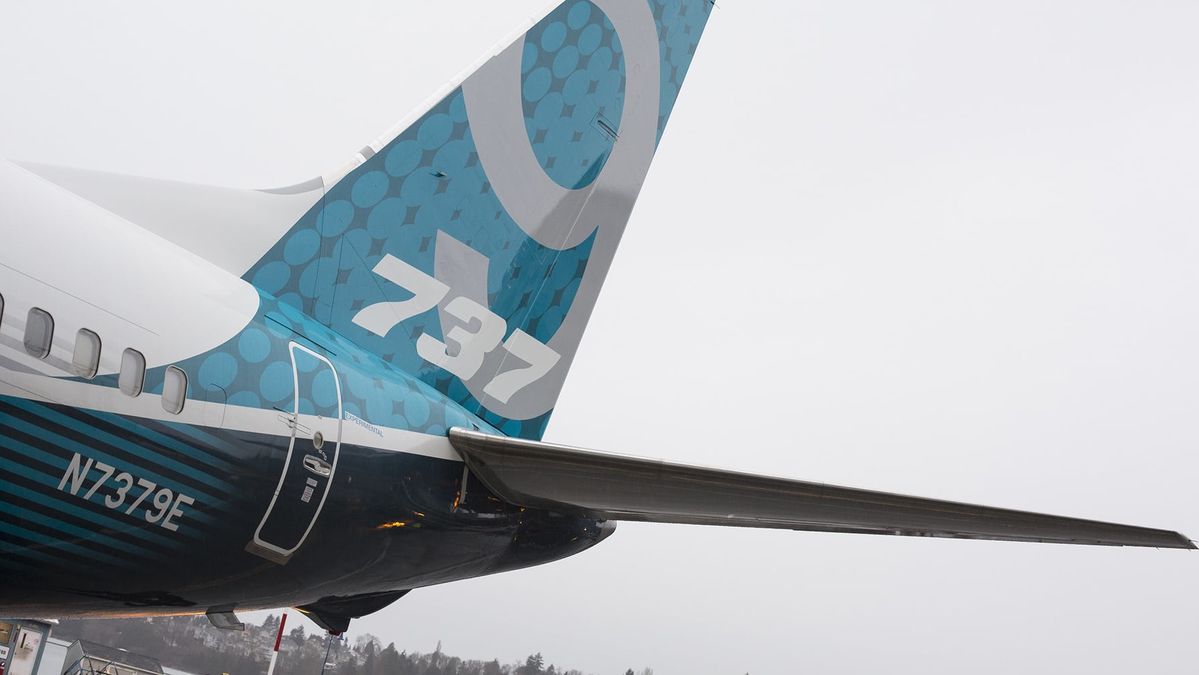Could the Boeing 737 MAX be flying again by year's end?
Two years after the first fatal crash which resulted in a worldwide grounding for the 737 MAX, Boeing eyes a return to the skies.

American Airlines plans to make Boeing 737 MAX passenger flights at the end of this year, following a decision by Europe’s top aviation regulator that the plane is safe enough to return to the region’s skies before 2020 is out.
The 737 MAX will serve the busy Miami-New York corridor once a day starting December 29 through January 4, American said. The airline will “take a phased approach” to returning the MAX to service once it’s approved to fly, including whether to extend the Miami-New York flight beyond January 4.
The carrier on Saturday removed from its schedule more than 1,900 flights that had been planned on 737 MAX planes for December through March 21, 2021, and shifted them to other aircraft, the airline said in an email.
The changes were made amid uncertainty over when the MAX will be certified by aviation regulators to resume commercial operation, and to allow American pilots time to bid on new MAX flights. The schedule isn’t final.
The MAX, the latest version of the venerable 737 narrow-body, was grounded in March 2019 in the wake of two accidents that took 346 lives, setting into motion a crisis that’s cost Boeing billions of dollars and then-CEO Dennis Muilenburg his job.
The Federal Aviation Administration's review is ongoing, and the FAA hasn’t commented on when the Max might operate in the U.S. The FAA is Boeing’s main certification body, and must act before other aviation safety agencies around the world can lift the grounding, under international law.
FAA chief Steve Dickson flew the Max late last month and said the plane’s controls felt “very comfortable."
American will fly the MAX, contingent on that approval, daily on one Miami-LaGuardia-Miami routing. The flights can be booked starting October 24, and customers will be made aware that they will be flying on a Max, the airline said.
“We remain in contact with the FAA and Boeing on the certification process and we’ll continue to update our plans based on when the aircraft is certified,” Fort Worth, Texas-based American said.
American earlier this month moved simulator-based training on the 737 MAX to December from November because of the uncertain timing of the certification process, and said it still would be able to train a sufficient number of pilots by the time the jet returns to flying.
The airline has 24 737 MAX planes that have been parked since the grounding, with orders for another 76.
The European outlook
After test flights conducted in September, the European Union Aviation Safety Agency (EASA) is performing final document reviews ahead of a draft airworthiness directive it expects to issue next month, said Patrick Ky, EASA executive director.
That will be followed by four weeks of public comment, while the development of a so-called synthetic sensor to add redundancy will take 20 to 24 months, he said. The software-based solution will be required on the larger MAX 10 variant before its debut targeted for 2022, and retrofitted onto other versions.
“Our analysis is showing that this is safe, and the level of safety reached is high enough for us,” Ky said in an interview. “What we discussed with Boeing is the fact that with the third sensor, we could reach even higher safety levels.”
The comments mark the firmest endorsement yet from a major regulator of Boeing’s goal to return its beleaguered workhorse to service by year-end, following numerous delays and setbacks.
EASA’s views also carry outsize weight in light of flaws in the original certification process that dented the U.S. regulator’s once-sterling reputation.
Ky said the synthetic sensor would simplify the job of pilots when one or both of the mechanical angle-of-attack sensors on the Max fails.
The device, which monitors whether a plane is pointed up or down relative to the oncoming air, malfunctioned in both crashes – the first off the coast of Indonesia in October 2018 and the second one, five months later, in Ethiopia.
“We think that it is overall a good development which will increase the level of safety,” Ky said. “It’s not available now and it will be available at the same time as the Max 10 is expected to be certified.”
China’s review
Another question mark for the Max is China, where aircraft demand surged prior to this year’s coronavirus pandemic.
China has participated in some of the Max reviews but hasn’t been involved in the flight testing that includes regulators from Canada and Brazil along with the FAA and EASA, Ky said. “I honestly don’t know where they are” with their evaluation, he said.
A spokesperson for the Civil Aviation Administration of China didn’t respond to a request for comment.
Ethiopia’s civil aviation authority will carry out its own safety checks on the Max fleet of Ethiopian Airlines Group, whose aircraft suffered the second fatal crash, Amdye Ayalew Fanta, the government’s chief investigator, said by phone on Friday.
The African nation is looking to complete a prolonged report into the deadly crash that killed all 157 people on board the plane by March, its second anniversary.
While Ky’s comments are positive for Boeing and its suppliers, the airframer “still has a mammoth task on its hands,” said Jeremy Bragg, an analyst at Redburn.
In addition to returning the aircraft to service, Boeing must also unwind inventories of about 450 Max jets that have been built but are awaiting delivery to customers, he said.
“This must be achieved against a backdrop of very weak underlying demand, due to Covid-19, which will almost inevitably result in very weak pricing on the Max for the next few years.”
This article is published under license from Bloomberg Media: the original article can be viewed here